Sparta Brook Polluter Identified
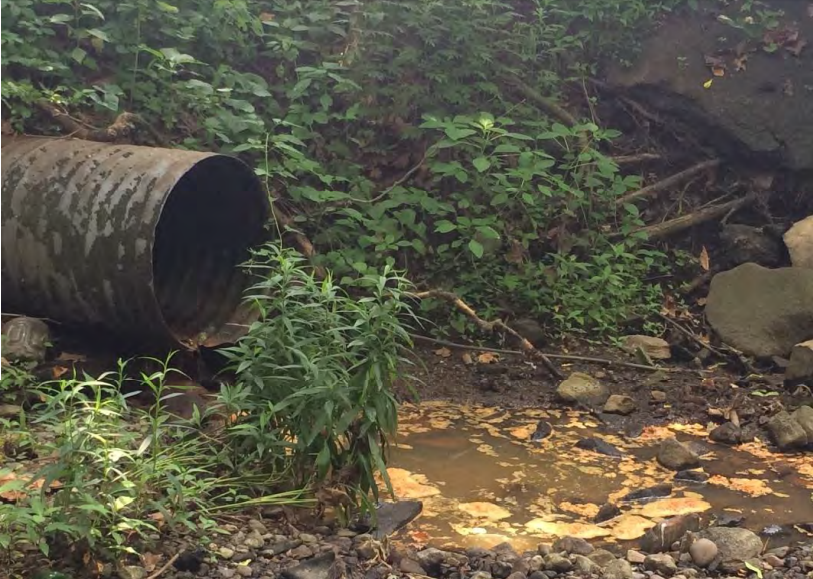
Orange discharge was observed in summer 2015 during water quality monitoring of the Sparta Brook in Ossining. (Photo by Gareth Hougham)
View more images on our Flickr site
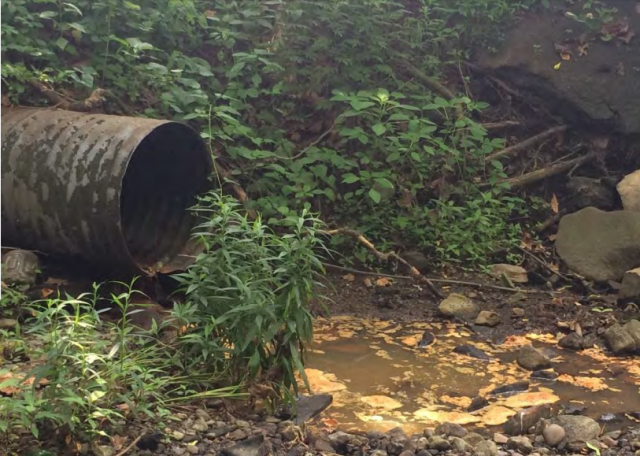
Orange discharge was observed in summer 2015 during water quality monitoring of the Sparta Brook in Ossining. (Photo by Gareth Hougham)
That question occurred to Gareth Hougham of Hudson Valley Arts and Science while conducting two rounds of water quality monitoring on the Sparta Brook this summer. He sampled for fecal indicating bacteria at 15 locations on the little stream that flows through Briarcliff Manor and Ossining to the Hudson River. At one location, about a third of a mile from the Hudson, near the Arcadian shopping center, he observed a strange discharge from a stormwater outfall.
Our Water Quality team looked into it this Fall, and was also confounded. Our best guess was that it is a substance known to sewer system operators as FOG — fats, oil and grease. FOG can take on many appearances (most of them frankly gross), and like cholesterol in your arteries, FOG in your sewer pipes causes serious problems. At this location, FOG illegally dumped in the sewer system has apparently caused repeated blockages resulting in raw sewage overflowing into the Sparta Brook.
We asked for help interpreting photos of the orange foam from a colleague at the Environmental Protection Agency who investigates potential Clean Water Act violations at stormwater outfalls. On a subsequent inspection, he helped us investigate. On Jan. 6, the apparent impact of the discharges on the health of the stream was visible: a slimy growth indicative of excess nutrients was visible at the pipe and for at least 20 feet or so downstream.
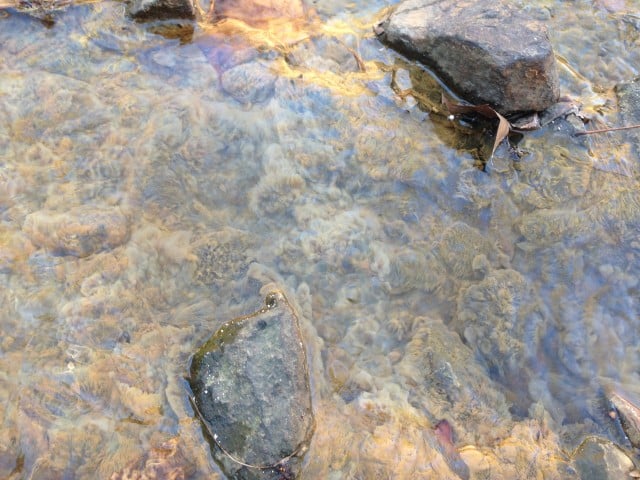
A thick undulating slime, possibly “sewage fungus,” coats rocks in the Sparta Brook, indicating stress from pollution. (Photo by Jen Epstein)
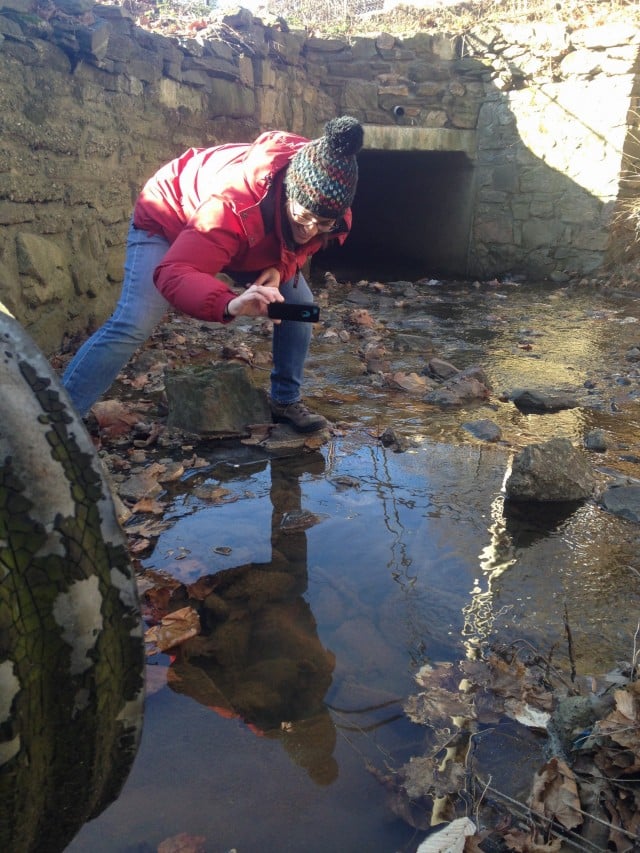
Riverkeeper’s Jen Epstein documents the impact of the pollution on the Sparta Brook. The stormwater outfall pipe is in the foreground at left. (Photo by Dan Shapley)
After documenting the discharge for the third time, and this time the visible impact on the health of the stream, we began to inspect the storm drains along roads and in parking lots that channel streetwater into this outfall during rain. In the regulatory language, this was an Illicit Discharge Detection and Elimination (IDDE) effort to prevent pollution from a Municipal Separate Storm Sewer System (MS4). Stormwater is a major source of water pollution, and the Clean Water Act requires communities to take steps to reduce the impact of urban runoff. In New York State, communities that are regulated by the MS4 program must inspect all outfalls at least once every five years, and have an IDDE program to stop pollution that is identified, among other requirements.
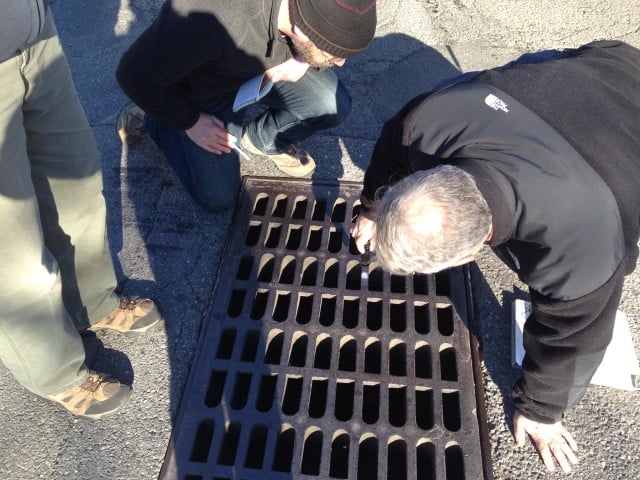
Riverkeeper and EPA staff inspect a stormwater drain. Even those storm drains that weren’t the cause of the illicit dumping were foul: gasoline and automotive oils produced rainbow sheens on the stagnant water within them, and many were filled with garbage and cigarette butts destined for discharge into the Sparta Brook. (Photo by Jen Epstein)
Our investigation took us to a dozen or so storm drains before we found the culprit, easily identifiable because the cold weather had frozen congealed grease all around the storm drain where it had been dumped.
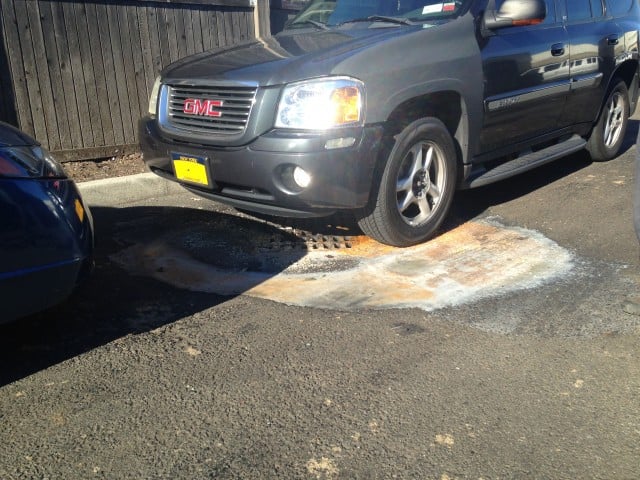
Congealed grease was visible all around a storm drain where it had apparently been dumped. (Photo by Dan Shapley / Riverkeeper)
This sign hangs on the building closest to the storm drain. And it’s true. The EPA has contacted the Village of Ossining to ensure it identifies and stops the polluter from dumping grease into the creek.
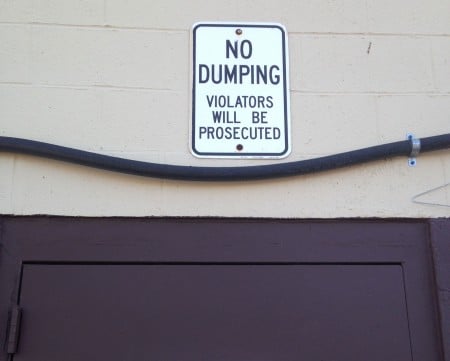
Soon, a new sign will be going up just above the outfall pipe. A project of Hougham and Hudson Valley Arts and Science, the sign will highlight the ecology and history of the Sparta Brook, and should help remind us that what flushes down a storm drain does not “go away” — it goes into a stream. The Sparta Brook isn’t a sewer — it’s a community of life.
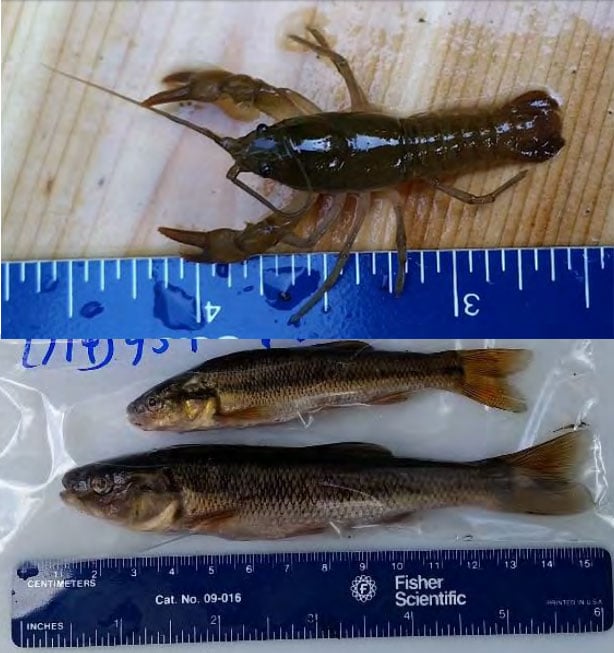
Fish and crayfish caught in the Sparta Brook in the summer of 2015. (Photos by Gareth Hougham)

